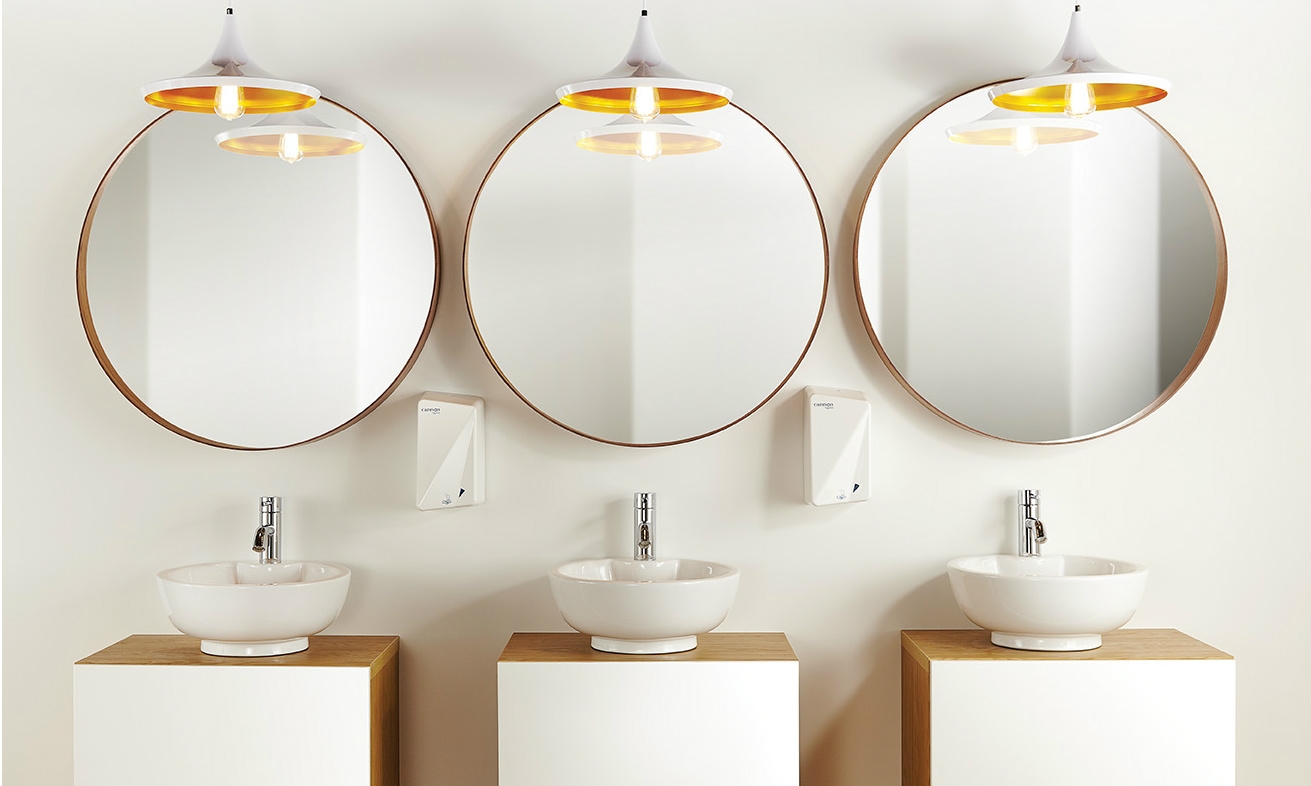Steve Nurdin, marketing manager at Cannon Hygiene, explains how university estate managers can maximise the use of automated systems to ease the pressure on hygiene during peak times.
The sheer volume of students, staff and visitors that pass through university campuses each day means facilities managers already face a significant challenge maintaining a clean and attractive environment at all times. Universities, unlike many educational facilities, are in use all year round, but the cyclical nature of semesters creates peak periods of use. Libraries and study areas tend to suffer the most, often at full capacity for over 12 hours a day during exam and coursework season, placing estate management teams under additional pressure to maintain standards.
During these busy periods, it is usually the washrooms that show the first signs of strain. There is little as off-putting as a dirty washroom, particularly when smells infiltrate the rest of the building. This is not only unpleasant for students, but for external visitors as well. Libraries are usually one of the most visited university buildings for either research or open days. It should never be underestimated the negative impression unclean facilities can leave on prospective students.
Universities are well aware of the popularity of their libraries and many invest a great deal in periodically remodelling and refurbishing their facilities to look more attractive. Washroom considerations should be included as part of these plans, installing units that are functional, aesthetically pleasing and that work automatically to help maintain hygiene standards. But investing in the look of a washroom alone isn’t enough: universities need to consider ways to ensure that hygiene in these areas in maintained in the long term.
For example, installing hand dryers rather than paper towels can dramatically reduce the potential for mess and overflowing bins. Similarly, installing automatic foam soap dispensers promotes good hand hygiene and limits unsightly spillages and soap drips around wash basins. Bad smells can be tackled by utilising fragrance dispensers that periodically neutralise the air and stop any bad odours from escaping into the rest of the building.
Invisible dangers, automatic solutions
These automated washroom solutions can all work in tandem to help improve the appearance of facilities and underpin the impression that maintaining good hygiene is a strong consideration for the university. Outside of its aesthetic impact, this is also essential to stop the spread of germs throughout a university.
This is a particular concern at the start of each academic year, when thousands of people arrive from all over the world, just as cold and flu season is about to begin. The infamous Fresher’s Flu affects 90 per cent of new students during their first weeks at university, according to a BBC report. It’s important that every effort is made to try and contain its spread.
Again, the high concentration of students in libraries and study areas creates the perfect environment for the spread of bacteria. The large amount of shared surfaces, coupled with the volume of people in close quarters and breathing the same air, means germs can be easily transmitted.
Education, appropriately, is key to tackling this at the source. Placing notices around the library encouraging users to keep areas tidy and to cover their mouths when coughing is a good start. And, hand-washing guides in washrooms serve as a reminder for students to clean their hands as well as advising on the best way to do so.
Although it is always advisable to directly encourage handwashing, as the World Health Organisation found, 30 per cent of people still freely admit to not washing their hands after using the toilet, allowing bacteria to leave the washroom and circulate on a wider scale. To prevent this, using automated dispensers that can spray sanitisers onto door handles is a sure-fire way to kill bacteria and prevent the spread of disease through hand-to-surface transmission.
Outside of the washroom, preventing the spread of bacteria has traditionally been trickier to tackle in larger, shared spaces. The first action for facilities managers is usually to increase the frequency of cleaning during peak times, but this is not always possible in libraries because of their high footfall. Instead, managers can again look to automated solutions to help support cleaning operations in the background.
For example, there have been considerable advances in aircare technology that support actively cleaning the air, by automatically removing dust, pollen and airborne bacteria to help stop bacteria transmission. Deploying these in busy, shared spaces can be a good way to stop coughs and colds from spreading, particularly in poorly ventilated areas where the same stale air can be circulated by air conditioning.
A shared responsibility
Ultimately, universities’ estate management teams need to create an environment that actively supports hygiene, both through their management strategies and by making the issue known to all staff, students and visitors.
Given the scale of most university campuses, this can be difficult to achieve and it’s very easy for FM teams to neglect hygiene management in favour of more visible issues like repairs and maintenance. Although an underperforming hygiene strategy may not be as immediately apparent as a broken lightbulb, it can be arguably more dangerous to a university’s reputation. With this in mind, many institutions will partner with external solutions providers to help share the responsibility, keeping hygiene high on FM agendas and maintaining cleanliness at all times, across all areas of a university campus.


